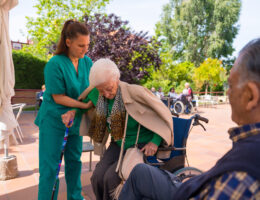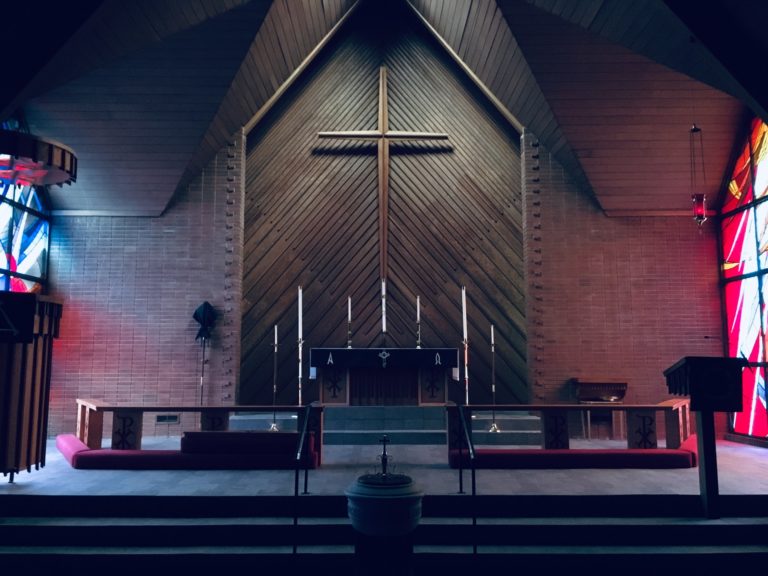As the COVID-19 pandemic rages on, a greater focus has been placed on church safety, especially in regards to hosting large gatherings throughout the holiday season. Fortunately, those who hold a leadership position within the church and have a say in how the church is run are in a place where they can further enhance safety as a whole for their congregation. If you’re interested in keeping your church safe this year and beyond, here are five tips to improve safety in your church.
1. Make sure your church is well-maintained and cared for.

Like any building, keeping your church well-maintained is key to keeping it, and those within it, safe. One excellent example of this is making sure that your appliances, as well as your plumbing, are up to date. Besides the fact that minor issues in these areas can be costly over time, they can also pose risks to your congregation if the problems are severe enough. Oftentimes, those who own the building don’t know that there are any problems until it’s too late.
Whether you’re interested in having your equipment repaired or replaced, make sure to reach out to a local company that can handle your needs (for example, doing a quick Google search for “plumbing Midland TX” can help you with your search). With the right service professionals on your side, repairing or replacing essential aspects of your church such as your HVAC system or plumbing will be a seamless experience.
2. Help your congregation adhere to COVID-19 safety practices.
Your congregation looks up to you not only for spiritual guidance but for life guidance as well. As such, it’s crucial that you help your congregation understand the current safety guidelines in place when it comes to COVID-19, why they need to be followed, and how they keep everyone safe both inside and outside a house of worship. But exactly which guidelines should you be promoting for greater safety within your own church? Some considerations for communities of faith to consider include:
- Establishing an environment that’s conducive to social distancing
- Providing and encouraging your congregation to wear masks so as to prevent the transmission of the virus
- Encouraging regular hand washing or sanitizing, especially if there is any contact made with foreign surfaces
- Having tissues on hand to cover coughs and sneezes (and making sure that those who feel sick stay home and rest)
- Cleaning and disinfecting areas that come into contact with individuals
- Offering proper ventilation within the church
Changing the way you gather and worship can certainly be jarring to many, but when it comes to the safety of those who attend your church, it can be worthwhile to take these extra steps so that they are able to practice their faith without the unnecessary risk.
3. Find new ways to gather and celebrate your faith.

If anything, the COVID-19 pandemic has strengthened the resilience of churches and their attendees. Many people have found new, inventive ways around restrictions and other problems that may prevent them from worshipping inside of a church. One excellent example of this is virtual worship. Although groups may be smaller than you’re accustomed to, you can work around safety issues by staying at home and inviting people online to worship with you. Do you usually conduct certain special ceremonies, like taking communion, in person? You can also work around this by helping your congregation get their own communion cups and plates that allow them to take part in this ceremony safely at home. Oftentimes, there are plenty of great communion sets that give you everything you need for the ceremony.
Need to host a larger gathering in a safer manner? One way you can do this is by pre-taping a sermon that your congregation can then play at a later date. All you need is a phone with a great camera quality (think runnning a business from your iPhone) and plenty of time set aside to edit and upload to your congregation. If it’s something that you would like to do in person, you may be able to host an event outside where there is plenty of space and fresh air for all who attend (although you should still adhere to the safety guidelines set forth above). Put simply, if there’s a will, there’s a way. If you want everyone in your church to be protected and you can’t always host mass indoors, consider some of these alternatives to practice your faith without putting anyone at risk!
4. Ensure that everyone has access to the items they need.
Virtual worshipping makes certain that no one is sharing items that could potentially be contaminated. However, when it comes to in-person services, many are often used to sharing hymnals, bibles, and other items that they’ll need when they’re worshipping. The key to being safe in this day-and-age is to ensure that everyone has access to the items they need to practice. If they’re able to, ask your congregation to bring their own materials that they’ll be using at your church from here on out. If they may not be able to purchase one at this time, consider having items on hand that you can give to members of your congregation that need it. Additionally, you can also make things easier for them by printing out materials that they may need to use or even by making certain materials strictly virtual. The fewer objects change hands between members of your congregation, the better.
5. Create a disaster plan in the event of an emergency.

One major safety consideration that few may consider is having emergency plans should disaster strike without warning. Although preventing the spread of COVID-19 is arguably the central focus for places of worship at this time, it’s important to remember that churches are also vulnerable to natural disasters and other types of emergencies, whether this is an earthquake or an electrical fire. Developing an emergency plan could entail:
- Informing all individuals of the various exits found throughout the church and how to exit correctly should an emergency arise.
- Having emergency medical supplies, food, and water on hand
- Developing a different plan of action for all of the various emergency situations that you may encounter at your church
- Considering the different needs of those in your congregation should you be faced with a disaster
- Knowing who to contact and where to go during your emergency plan
Preparedness is the best thing to have on your side if you and your congregation are faced with any type of danger, no matter how tame or extreme it may be. Make sure to make an emergency plan for these types of situations. Even if you never encounter them, it’s much better to be prepared than to be in need when the time arises.
Safety is something that should be non-negotiable in all public settings. Fortunately, you have the power to make your church safer for everyone who attends. If you want to begin making your church a safe space for your congregation, use the guide above to find some areas that’ll require priority during these trying times so that everyone who walks through your doors is protected, regardless of the dangers that they may be facing.




